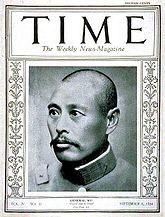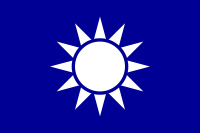History of the PRC – Part Five Posted by sasha on Nov 3, 2010 in Culture
Welcome back to our Chinese history lesson! If you are just joining us, you might want to go back and catch up a bit. For some reason, Part Four posted somewhere way back on the blog, so HERE is the link. Parts One-Three can easily found by going back in the blog a little ways.
After the May Fourth Movement, China was experienceing incredible changes. The fallout from World War I and the Treaty of Versailles was immense. Anti-Japanese sentiment was strong, as was disapproval of Duan Qirui and his Anhui Clique. It also promoted the spread of Marxism in China, thus laying the foundation for the Chinese Communist Party (CCP).
Due to his pro-Japanese policies, Duan’s popularity plummeted. Seeing an opportunity to kick him while he was down, members of the Zhili Clique formed an alliance with the Fengtian Clique and prepared to go to war. In November 1919, leaders from both cliques met and signed the Rough Draft of the National Salvation Allied Army (救国同盟军草约 – Jiùguó tóngméng jūn cǎo yuē). Eearly in 1920, Cao Kun (leader of the Zhili Clique) recruited more anti-Duan warlords to join force with him. Led by Cao, the Zhili Clique and their temporary allies began the Zhili-Anhui War (直皖战争 – Zhí wǎn zhànzhēng) against Duan and the Anhui in July 1920.
With Duan as their commander-in-chief, Anhui forces formed the National Stabilization Army (定国军 – Dìng guó jūn), while Zhili forces led by Wu Peifu dubbed themselves the Traitor Suppression Army (讨逆军 – Tǎo nì jūn). The battle did not last long, as the allied Fengtian/Zhili army basically dominated the Anhui forces in just about one week. Duan must have realized that the fight was hopeless, as he again resigned from his position on July 19, 1920.
This war led to the permanent breakup of the Beiyang Army and the end of Anhui control. For a short time, the Fengtian and Zhili cliques would work together to form a joint government in Beijing. Their differences, however, would eventually lead to more conflict. Tensions began rising as soon as the two cliques took control of Beijing. As a result of many disagreements, the First Zhili-Fengtian War (第一次直奉戰爭 – Dì yīcì zhí fèng zhànzhēng) broke out in April 1922. Led by Wu Peifu (吴佩孚), the Zhili forces managed a resounding victory over Zhang Zuolin (张作霖) and the Fengtian army, who retreated to Manchuria. After the war, Zhili forces controlled Beijing, while Zhang and the Fengtian declared Manchuria independent.
With all of this talk about the rivaling cliques, one important name has not been mentioned for a while in this history lesson – Sun Yat-sen. Having returned to China in 1917, Sun set out to establish a rival government in order to unify China. He started out in Guangzhou but was soon forced out and exiled to Shanghai. It was there that he brought back the KMT under a new name – the Chinese Kuomintang. In the coming years, the KMT would play a huge role in this story.
Although the Zhili Clique now controlled Beijing, the government control over the provinces had deteriorated quite a bit. At the time, the Zhili were in control up north in Beijing, Manchuria was independent under Zhang, and the south was divided amongst numerous warlord armies (most notably the leftovers of the Anhui and Sun’s KMT). With so many different groups vying for control, more conflict was a brewin’. Believe it or not, the story only gets more interesting from here!

Build vocabulary, practice pronunciation, and more with Transparent Language Online. Available anytime, anywhere, on any device.
About the Author: sasha
Sasha is an English teacher, writer, photographer, and videographer from the great state of Michigan. Upon graduating from Michigan State University, he moved to China and spent 5+ years living, working, studying, and traveling there. He also studied Indonesian Language & Culture in Bali for a year. He and his wife run the travel blog Grateful Gypsies, and they're currently trying the digital nomad lifestyle across Latin America.








Leave a comment: